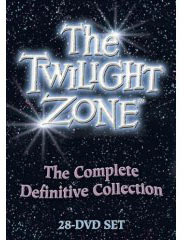
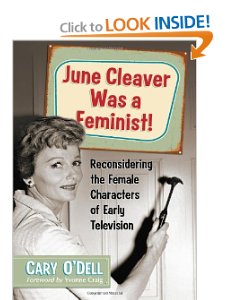



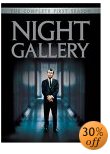
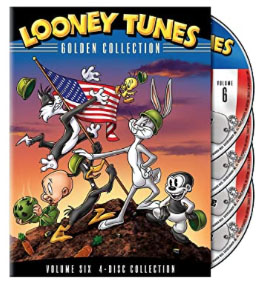
 |
 |
 |
 |
 |
 |
 |
|
TV Shows on DVD/ / // / / Punk Book/ / / Holiday
Specials on DVD / /
/ Classic
Commercials /
|
|||||||
|
In 1950, Cincinnati resident Rod Serling, just out of college, started submitting, and selling, scripts to the fledgling TV market. By 1954, he was one of the hottest writers in television, weaving intelligent dramas for virtually every anthology show on the air ('US Steel Hour', 'Schlitz Theatre', 'Lux Video Theatre', 'Suspense', 'Armstrong Circle Theatre'). The 'Kraft Television Theatre' broadcast of "Patterns" in 1955 brought the author national acclaim, the first TV drama in history to ever be repeated by popular demand. "Patterns" won Serling the first of his six career Emmy Awards, more than any other individual to date.
In 1958, Rod Serling met with CBS exec William Dozier and pitched an idea he'd been brewing for a long time - a fantasy-oriented anthology program. By creating an undefined, otherworldly environment, Serling hoped to tackle controversial subjects and tell meaningful stories under the camouflage of science-fiction and whimsy. "Before the script goes before the cameras," Serling was quoted as saying, "the networks, the sponsors, the ad agency men censor it so that by the time it's seen on the home screen, all the message has been squeezed out of it." Recalling an earlier production, he stated, "One time we couldn't mention Hitler's gas ovens because a gas company sponsored the show." Intrigued by the 'Twilight Zone' concept, Dozier ordered a script and a few weeks later Serling turned in 'The Time Element', the story of a guy who wakes up on December 6, 1941 - the day before the Japanese bombing of Pearl Harbor. Dozier liked the script, but hour-long anthology shows were on the way out - would Serling consider a half-hour format for the series? Despite misgivings about the abbreviated form (considering half-hour shows beneath him), Serling turned in an alternate, thirty-minute script. "The Time Element" was shelved and "The Happy Place", a melancholy story of a society that doesn't allow anyone to live past the age of 60, was approved to become the first episode of Serling's new series, 'The Twilight Zone'. Before filming could begin, the CBS ultimately rejected "The Happy Place" - reasoning it was unsuitable as a pilot, too depressing to attract advertisers (who were generally pushing 60 themselves). Serling reacted angrily, storming out of the meeting when he was told, turning his concentration instead to other TV and motion picture projects. THE TIME ELEMENT
CBS was strong-armed into taking the anthology series in order to get the adventures of the Ricardos for an hour once a month. While the 'Lucy-Desi' programs were top-ten gold, ratings suffered depending on what was being presented on the alternate weeks. In a meeting with Rod Serling, Granet asked television's most acclaimed writer if he had a script he could use for 'Desilu Playhouse'. Serling answered no, but then remembered CBS still had "The Time Element" on hold.
Serling completed minor rewrites on "Time Element" (for instance, Westinghouse had the Army excised from the story because of their defense contracts); afterward he turned in his third pilot script to CBS for 'The Twilight Zone,' entitled "Where is Everybody?"
The story was a strong one–small-time bookie Pete Jensen (William Bendix) asks a psychiatrist (Martin Balsam) to evaluate his story - he keeps waking up on December 6, 1941, the day before the Japanese bomb Pearl Harbor. He keeps drifting back and forth from the past, where no one takes him seriously when he warns them of the impending attack. The ending provides a 'Twilight Zone' twist when the doctor goes into a bar, sees Jensen's picture on the wall, and is informed he died on December 7, 1941 at Pearl Harbor.
Because of the robust viewer reaction to "The Time Element", CBS execs moved 'The Twilight Zone' to the front burner. A deal was struck, giving Serling and CBS each 50% ownership of the show, with the network picking up all of the production costs. A new pilot, starring Earl Holliman, was rushed into production. "Where is Everybody?" was the tale of a man wandering through a seemingly deserted city but discovering lit cigars, running cars and other signs that people had been there until recently. Finding no one wherever he looks, he becomes more and more panicked (it turns out he's an astronaut going through an isolation experiment). Based on the strength of the pilot, sponsors (eventually) bought into the series but they had one reservation. The show needed a reoccurring character or narrator. After a frustrating search, Serling himself was selected (at first just doing voice-overs, later appearing on camera) and the rest is history.
After three years on the air, 'The Twilight Zone' was canceled in 1962 - only to be brought back by popular demand in January, 1963. This time CBS suggested the show be expanded to an hour. Ironically, it was Serling who fought the idea - he reasoned (correctly) that 'The Twilight Zone' worked best as a short story. "I don't have to write a third act," Serling once said, "The third act is - 'That's the way it is in the 'Twilight Zone!'" The hour format flopped and the program was cut back to thirty minutes for the 1963-64 season, Twilight Zone's last year. From 1959 until 1964, Serling wrote or adapted 89 'Twilight Zone' scripts himself and supervised more than 60 other memorable episodes, with stories by Richard Matheson ('Killdozer'), Earl Hamner ('The Waltons'), Charles Beaumont and others. Just months before 'The Twilight Zone' went into syndication, Serling sold his rights to the series to CBS. By that point, he was writer/creator of 'The Loner', a thirty-minute western series starring Lloyd Bridges that debuted in 1965. That program failed to capture an audience and was cancelled after one term. Serling missed out on millions in future royalties when 'Twilight Zone' proved a major hit in syndication. His subsequent small screen ventures left him even more frustrated and generally bitter about series television and the industry in general. Rod Serling was rarely seen on TV in the mid-sixties, though he turned up for one season in 1969 as the host of 'The Liar's Club', a syndicated game show.
In December of 1970, Serling returned to prime-time as the host and occasional writer for NBC's 'Rod Serling's Night Gallery'. The series was based on a highly rated, critically acclaimed TV-movie of the same name that aired a year earlier. Despite the title, the show WASN'T his, Serling was just a hired hand more or less - although the stories that he wrote are nearly as good as the best 'Twilight Zone' episodes, particularly 'They're Tearing Down Tim Riley's Bar,' which aired January 20, 1971, in my opinion one of the most compelling dramas ever written for television. This series suffered from that cheap, Universal backlot look which often spoiled the mood, with obvious day for night shots, but there was no other horror / sci-fi to be found on TV at the time and the network did little to insure its success. 'Night Gallery' ran for a short season as part of the 'Four-In-One' series, then earned a weekly timeslot in the fall of 1971. When the show returned in the fall of 1972 it was cut from 60 to 30 minutes and was cancelled mid-season. They're Tearing Down Tim Riley's Bar, the song:
Rod Serling hosted one more suspense series that aired in in 1973 - Zero Hour, a show very much like Night Gallery with Serling introducing each episode; he even wrote some of the scripts. A year in the making, the many stars appearing on the syndicated series included: George Kennedy, George Maharis, Craig Stevens, Shelley Berman, Susan Oliver, William Shatner, Greg Morris, Joe Campanella, Howard Duff, Judy Carne, Ed Nelson, Juliet Mills, Keenan Wynn, Nehemiah Persoff, Brock Peters, Joanne Worley, Edgar Bergen, Peter Marshall, Ross Martin, Joe Campanella, Monte Markham, Mel Torme, Jackie Cooper, and Bob Crane. Serling died in 1975 during open heart surgery. |
|
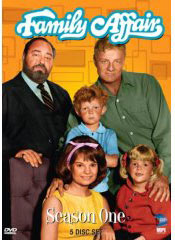 |
 |
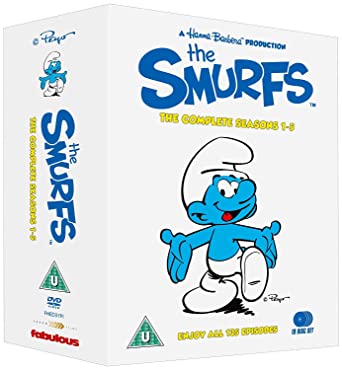 |
 |
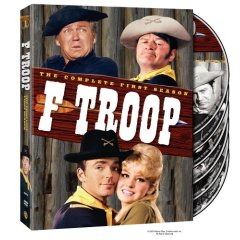 |
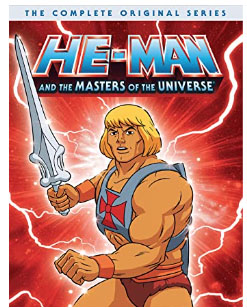 |
||
|
||||||||||||||
| Everything
you're looking for is right here: Save money! |